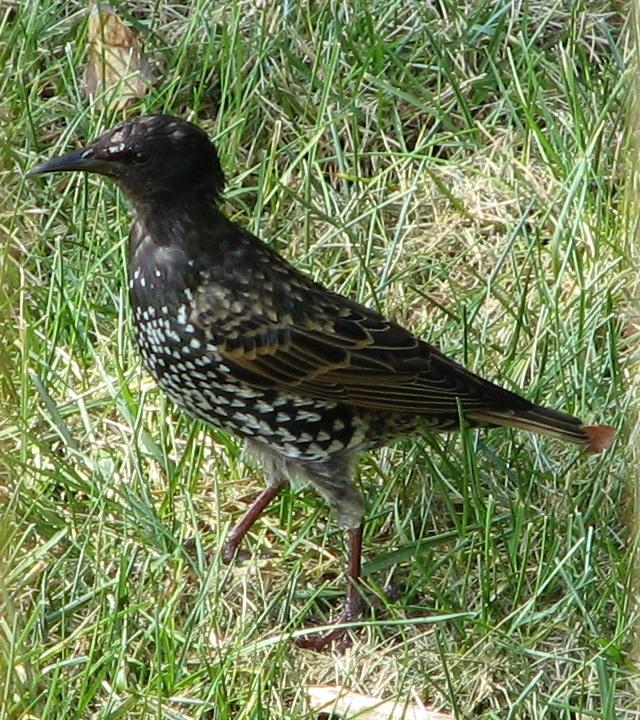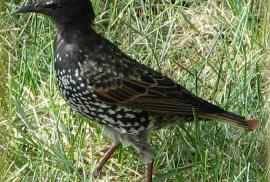Guide to Boreal Birds
Overview
Conditioned by centuries of living in settled areas in Europe, this species easily adapted to American cities after 100 birds were liberated in Central Park, New York City, in 1890. Since then it has spread over most of the continent. Its large roosts, often located on buildings, may contain tens of thousands of birds. Hordes of these birds create much noise, damage vegetable or fruit crops, and do considerable damage around feedlots, consuming and fouling the feed of domestic cattle, and have proved difficult to drive away. Starlings compete with native hole-nesters for woodpecker holes and natural cavities. There has been much debate regarding their economic value, but their consumption of insects, such as locusts and ground beetles, seems to tip the balance in their favor.
Description
7 1/2-8 1/2" (19-22 cm). Smaller than a robin. A short-tailed, chunky, iridescent black bird; long pointed bill, yellow in summer and dark in fall and early winter. Plumage flecked with white in winter. Juvenile is uniform dull gray with dark bill.
Voice
A series of discordant, musical, squeaky, and rasping notes; often imitates other birds. Call a descending whee-ee.
Nesting
4-6 pale blue eggs in a mass of twigs, grass, and trash lined with finer plant material and feathers, and placed in a tree or building cavity.
Habitat
Cities, suburban areas, farmlands, and ranches.
Range/Migration
Occurs from Alaska and Quebec south throughout continent to Gulf Coast and northern Mexico. Native to Eurasia and widely introduced around the world.



